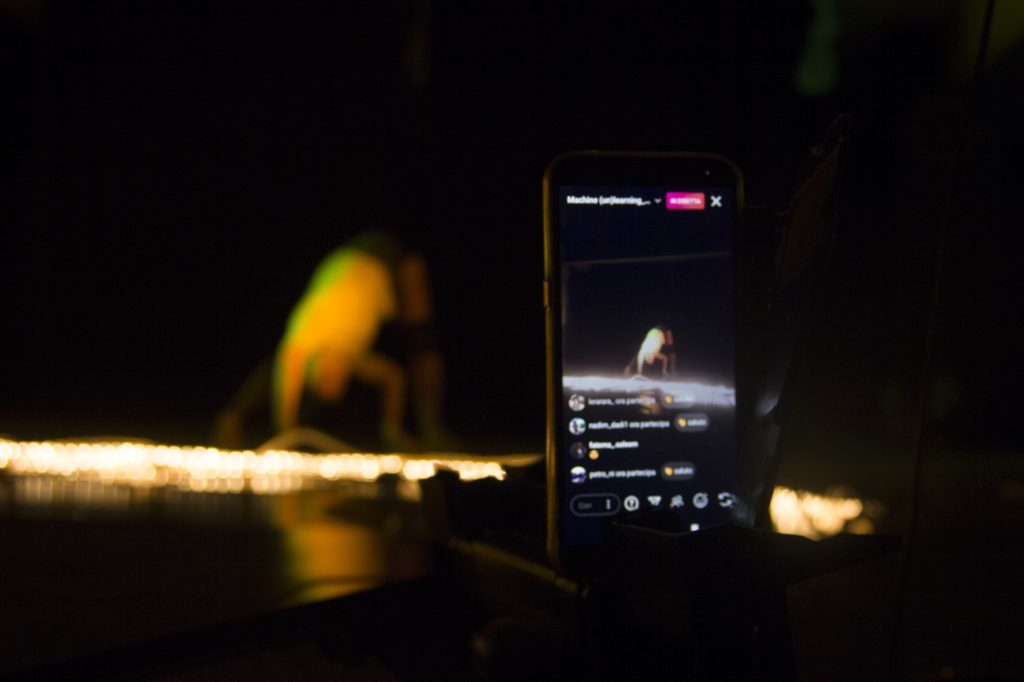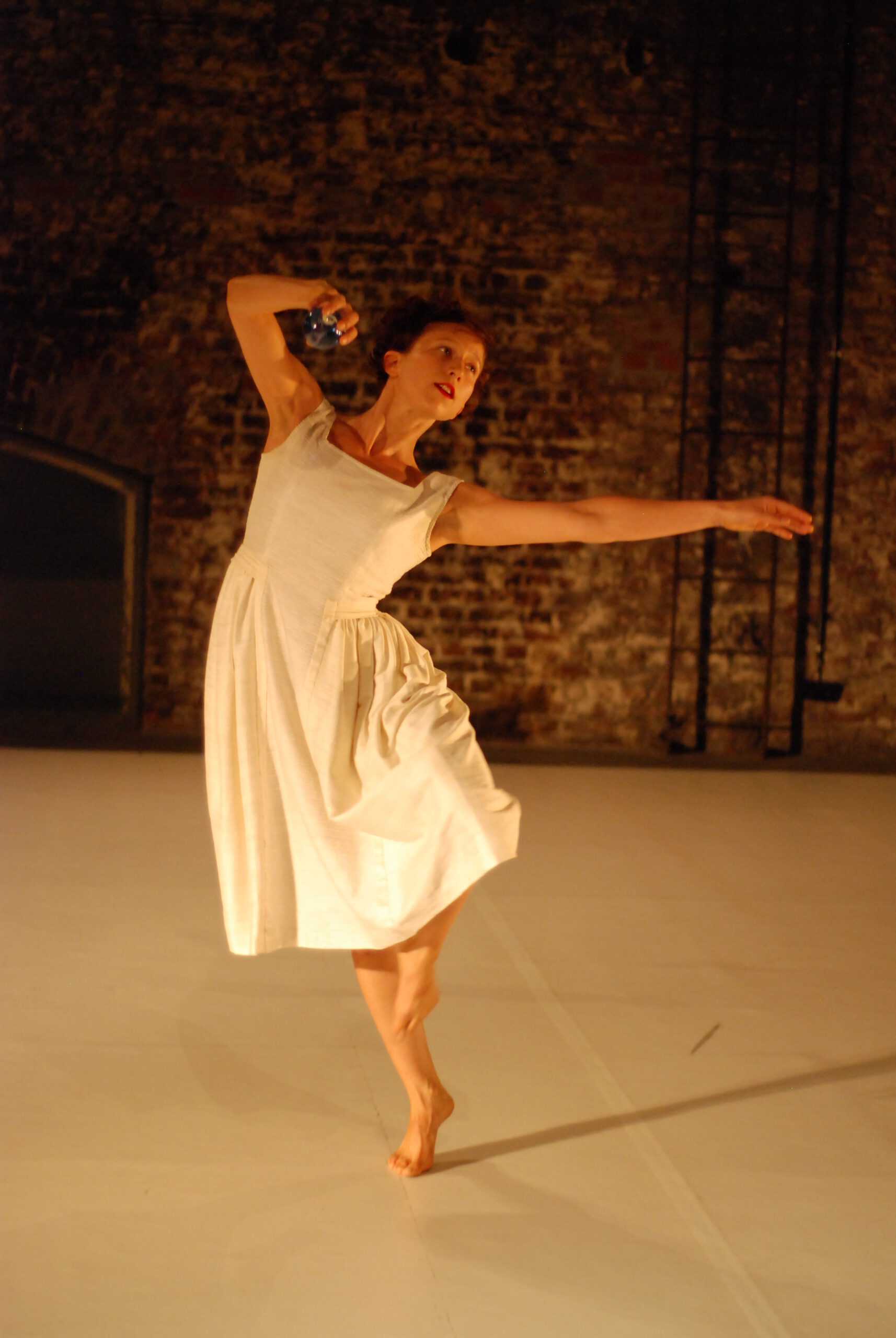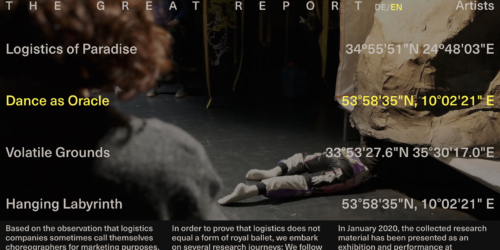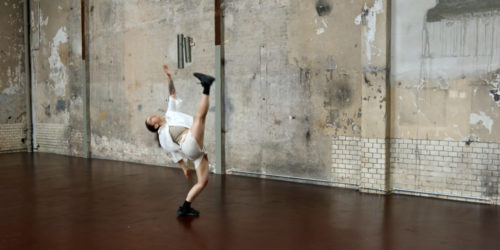Machine (un)learning. Zinnia Nomura

What do watching a contemporary dance performance and playing a video game have in common? Basically… nothing. From the audience, to the pacing, to the design process, to the technology… the two could not be more different. Yet despite (or because of) their differences, I am convinved that these two fields have a lot to learn from one another.
Enter:
Machine (un)learning is an interactive dance project that invites the audience to manipulate the performer, thus creating a connection from afar. The choreography develops with each spectator, who can manipulate the dancer like an avatar, facilitating a dialogue between the two, and eliminating the traditional passivity of the audience.
One year ago, I was inspired to create an interactive dance project that invites the audience to manipulate me, the performer, without physically touching me. As the pandemic hit, I realized that my project <Machine (un)learning> had a special relevance to the circumstances. From the perspective of a dancer I wondered: can the potential of a profound connection be fully explored without physical contact? The instinctive, wordless interface in contact dance is one of the most efficient types of communication: people listen to one another, carry and are carried, lead and are led. But in this era, can there be contactless contact improvisation, using a tool that anyone can use?
I invented a simple concept. I am a human machine and can be manipulated with a conventional computer mouse. The visitors give the commands, the mouse transmits the signals, I dance.
Even in the 21st century, most stage productions put the audience in a passive role; the traditional theater audience is aging away. Those who grew up in the Internet age expect entertainment to be interactive. The concept of gamification can help. By imitating the format of a video game, <Machine (un)learning> creates a path to contemporary dance and performance which captures people’s attention and invites them to become fully involved.



The format is not only fun, but also inclusive. If the dancer is controlled with a gameplay device, even though the performance is interactive, anyone who can manipulate the gameplay device can join. In <Machine (un)learning>, the users are my dance partners, and these users need not be professional dancers. I would like to invite participants of all languages, professions, physical ability levels and ages.
As my research begins, I’m excited to research on the intersection of multiple fields: philosophy, interface design, game theory, contemporary dance, theater, psychology and more. Each user interprets the work through their own lens; each user will be co-creating with me.






